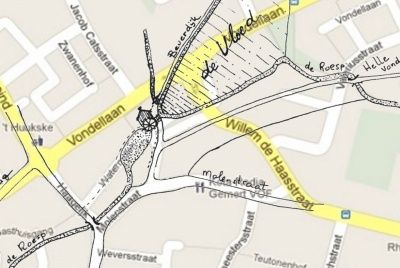Archeologische opgraving Watermolen in Gemert
Contact
5421 LJ Gemert Plan your route to Archeologische opgraving Watermolen in Gemert
It had long been suspected that a mill had actually stood near Molenstraat. In 1998, this suspicion was confirmed through an archaeological survey. Wooden parts of the mill and fragments of grinding stones were found. It was a medieval water mill. It stood on the Peelrand fault along the stream De Rips.
The mill was mentioned in a letter from the Lord of Gemert as early as 1326. This would mak…
It had long been suspected that a mill had actually stood near Molenstraat. In 1998, this suspicion was confirmed through an archaeological survey. Wooden parts of the mill and fragments of grinding stones were found. It was a medieval water mill. It stood on the Peelrand fault along the stream De Rips.
The mill was mentioned in a letter from the Lord of Gemert as early as 1326. This would make it the oldest Gemert mill. This makes sense, as watermills have existed longer than windmills. This water mill was in use until the 16th century. It was probably a single underdrain mill, meaning that there was one paddle wheel that stood with its bottom in the water. It was mainly used for grinding corn. Several (waste) pits containing pottery, grindstones and millstone fragments were found. One of these grinding stones was located in a pit with pottery dating from the second half of the 12th to the first quarter of the 13th century. Examination of wood samples from the excavation showed that the water mill was built as early as the year 1210. Since the Van Gemert family originally owned the watermill, we therefore know that the then Lord of Gemert built the watermill: Willem van Gemert. It is the oldest Lord of Gemert known by name. The mill thus appears to be even older than the first time it appears in documents.
In about 1335, Diederik II van Gemert built Gemert's first windmill on the site of today's Eendracht. It is a stone tower mill later known as 'De Beer'. In addition to the water mill, Gemert henceforth had a windmill. Due to the Van Gemert family's problems with the Teutonic Order, Diederik III van Gemert was forced to sell both his watermill and windmill to the Teutonic Order in 1364, making the Gemert Commandery the owner of both mills.

